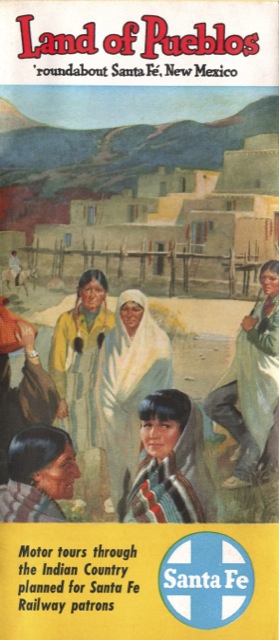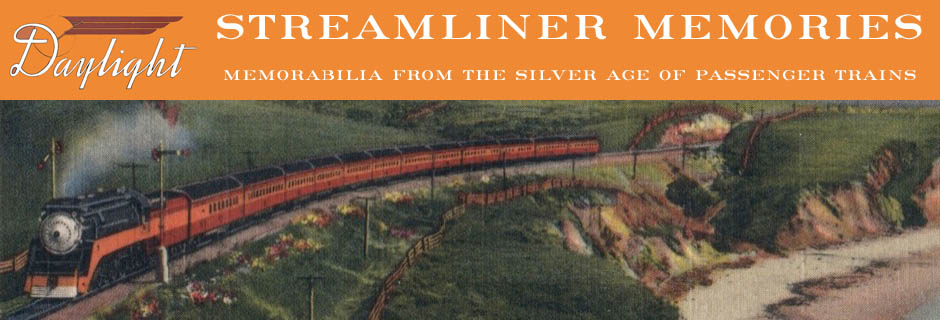This 1949 brochure has a nice four-color painting on the cover, yet the rest of the brochure is filled with fifteen black-and-white (or, in some cases, magenta-and-white or black-and-yellow) photographs. It always amazes me that the railroads would pay the extra expense of printing in four colors yet not take advantage of it by using color photos. After all, the cost of color separations would be small compared with the cost of printing 35,000 of these brochures.
 Click image to download a 6.4-MB PDF of this brochure.
Click image to download a 6.4-MB PDF of this brochure.
The brochure describes several one-, two-, three-, and four-day tours, all of which start in Santa Fe, a $1.65 ($13 in today’s money) round-trip bus ride from Lamy, the nearest stop for Santa Fe passenger trains. Prices for the multiple-day tours include lodging and motor coach transportation but not meals. The four-day tour goes to Durango, Silverton, and Mesa Verde National Park, returning via Aztec Ruins National Monument, at a cost of $150 ($1,200 in today’s dollars). Considering meals weren’t included, that seems a bit steep.
The brochure notes that “All motor trips are operated by the Indian Detour Transportation Company, Santa Fe, New Mexico.” The Fred Harvey Company had started the detour operations in 1925, but sold them in 1931 to its operation manager, R. Hunter Clarkson. A native of Scotland, Clarkson had served as a major in the British army in World War I. After the war, he moved to the United States were he got a job managing Fred Harvey’s Grand Canyon transportation operations and later met and married the daughter of the vice president of Santa Fe’s passenger operations.
Major Clarkson successfully kept the Indian Detour Company afloat during the Depression, but then rejoined the British army in World War II, leaving management of the Indian Detours to his brother Jim. Jim continued to manage it after the war, buying the company from his brother in 1956 and in turn selling it to Grey Line in 1968.
